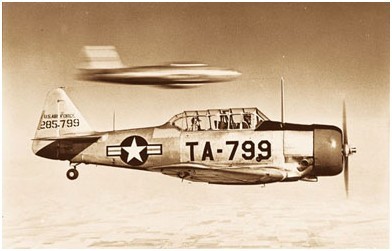
Defining Moments
USINFO | 2013-09-30 14:42

Suddenly the phenomenon of flight had become an international marvel, and the rush to develop it introduced a raft of issues that neither the Wrights nor most of their contemporaries had ever considered: how would skilled individuals be trained to design and oversee the manufacture of finicky aircraft? Who would conduct research leading to better structural materials and engines? What about weather forecasting? And airports? The 20th century lay ahead, along with the technologies, processes, and institutions that marked the route of progress in aviation.
World War I broke out in Europe during the summer of 1914, and as the conflict intensified, the superiority of European aviation became so gallingly apparent in the United States that the Smithsonian Institution sent a delegation overseas to assess the situation and make recommendations. The members’ report, issued in 1914, helped spur the creation of a National Advisory Committee for Aeronautics a year later. At first, the NACA was merely advisory; it recommended to other federal agencies fruitful research projects they might pursue, but soon it received additional funding and a cluster of buildings at a new U.S. Army airfield in Virginia. The site became the Langley Memorial Aeronautical Laboratory. Formally dedicated in the spring of 1920, the facility soon propelled the United States into the front ranks of nations conducting aeronautical research.
Eiffel, Guggenheim, & Rohrbach
In 1913, Jerome Hunsaker began to offer formal instruction at the Massachusetts Institute of Technology in the art and practice of aeronautical engineering. Unable to find suitable textbooks, Hunsaker translated an aerodynamics text that Alexandre Eiffel had written after he designed the Eiffel Tower in Paris and tested aircraft models by dropping them from its heights. The need for trained aero-engineers during World War I stimulated rapid expansion of instruction in the field at the University of Michigan, MIT, and elsewhere.
After the war, the Daniel Guggenheim Fund for the Promotion of Aeronautics underwrote essential programs for weather forecasting, techniques for blind flying, and the expansion of aeronautical education. Between 1926 and 1930, the fund dispensed over $3 million, including hundreds of thousands of dollars to various U.S. universities. The Fund’s board wanted to encourage aero-training on the West Coast, where fledgling companies like Boeing, Douglas, and Lockheed needed aero-engineers, and it focused on the California Institute of Technology, endowing the Guggenheim Aeronautical Laboratories, which became the GALCIT complex.
The Fund recruited Theodore von Kármán, one of Europe’s best young aerodynamicists, to teach and conduct research at GALCIT, where he also became a major figure in shaping policy for both civil and military aviation.
During the 1920s, designers turned to metal construction. Wood, despite its economy, availability, and workability, was not strong enough for larger aircraft or the improved cantilever wing structures that had to bear greater loads without the support of struts and wires. All-metal craft built by Junkers in Germany and the Ford Motor Company in the United States were admired for their durability and longevity, but they were too heavy. In Germany, Adolph Rohrbach, an imaginative designer, pursued the concept of stressedskin construction. In early airplanes, fabrics had served only as a covering, but stressed-metal skin formed a loadbearing part of the airplane’s structure. Rohrbach visited the United States in 1927, and his lectures and subsequent articles were followed closely by the U.S. aviation community. At about the same time, the NACA unveiled three areas of new technology: an advanced engine cowling, a catalog of more efficient airfoil shapes, and a number of improvements in streamlining and power plants. The NACA cowling completely enclosed the radial engine’s cylinders and gave cooling air a path to follow, thereby reducing drag. A Lockheed Vega equipped with the cowl gained 20 mph. Other developments proved that little things can matter.
For want of a ring…
One seemingly insignificant item, known as the O-ring, revolutionized retractable landing gear. Early retractable systems relied on the pilot’s muscles to retract the gear, but by the 1930s, electric motors and hydraulic cylinders powered retraction as gear increased in size. Most hydraulic systems of the era used leather seals; plagued by persistent leaks, they were unreliable and expensive to maintain. In 1933, Niels Christensen, an independent inventor, devised a seal made of an O-shaped piece of tough, pliable rubber that fit inside a matching groove. This development immediately increased the reliability of retractable gear systems and was adopted by military and civil aircraft alike.
Share this page



















